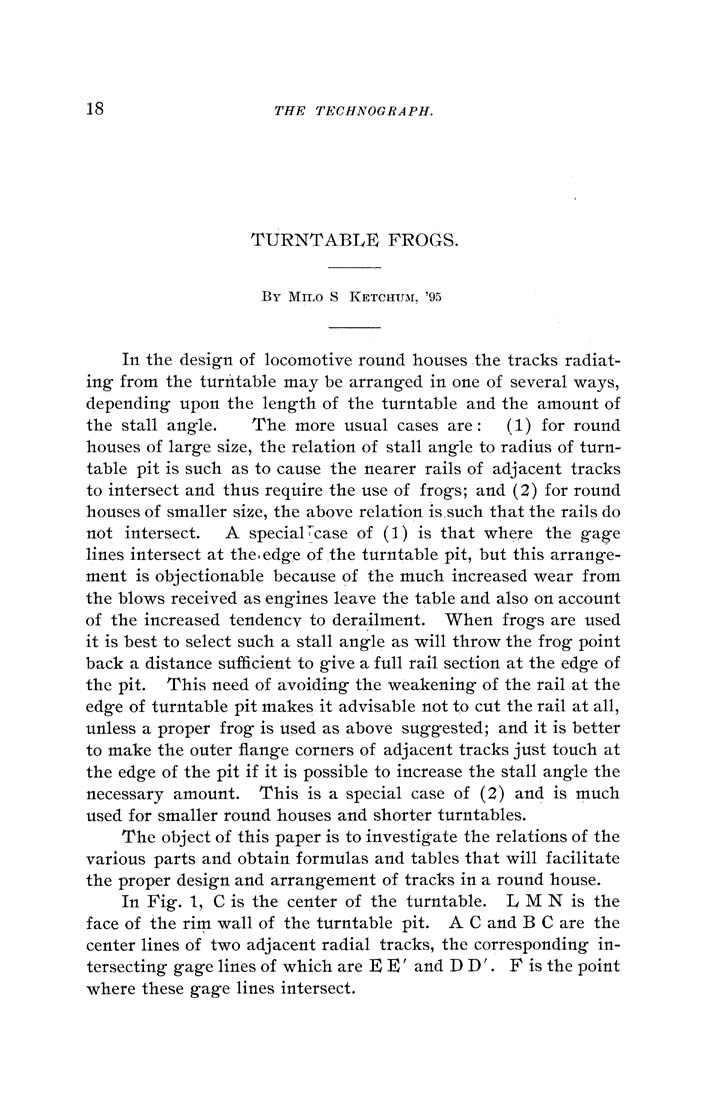18 THE TECHNOGRAPH.
TURNTABLE FROGS.
By Milo S Ketchum, '95
In the design of locomotive round houses the tracks radiat¬
ing from the turntable may be arranged in one of several ways,
depending upon the length of the turntable and the amount of
the stall angle. The more usual cases are: (1) for round
houses of large size, the relation of stall angle to radius of turn¬
table pit is such as to cause the nearer rails of adjacent tracks
to intersect and thus require the use of frogs; and (2) for round
houses of smaller size, the above relation is such that the rails do
not intersect. A special-case of (1) is that where the gage
lines intersect at the.edge of the turntable pit, but this arrange¬
ment is objectionable because of the much increased wear from
the blows received as engines leave the table and also on account
of the increased tendency to derailment. When frogs are used
it is best to select such a stall angle as will throw the frog point
back a distance sufficient to give a full rail section at the edge of
the pit. This need of avoiding the weakening of the rail at the
edge of turntable pit makes it advisable not to cut the rail at all,
unless a proper frog is used as above suggested; and it is better
to make the outer flange corners of adjacent tracks just touch at
the edge of the pit if it is possible to increase the stall angle the
necessary amount. This is a special case of (2) and is much
used for smaller round houses and shorter turntables.
The object of this paper is to investigate the relations of the
various parts and obtain formulas and tables that will facilitate
the proper design and arrangement of tracks in a round house.
In Fig. 1, C is the center of the turntable. L M N is the
face of the rim wall of the turntable pit. A C and B C are the
center lines of two adjacent radial tracks, the corresponding in¬
tersecting gage lines of which are E E' and D D'. F is the point
where these gage lines intersect.
|








